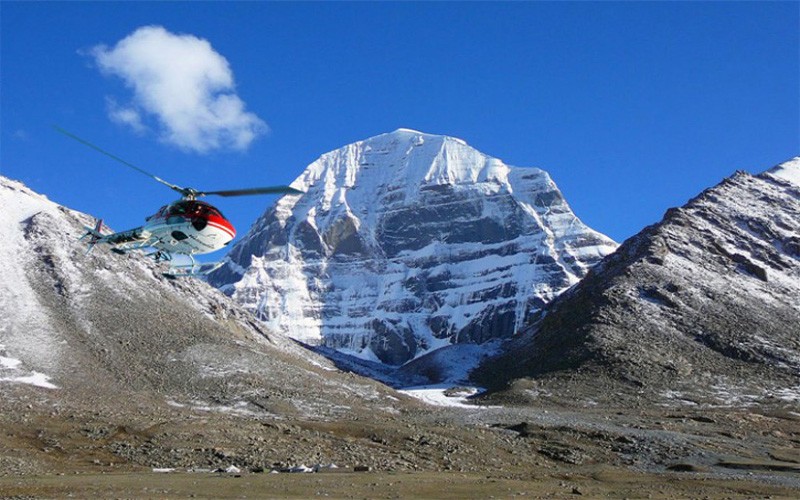China desecrates religious sites near Kailash Parvat, Chinese Must Vacate Entire Ngari Prefecture At Once

China’s enhancement of military facilities near Mt Kailash includes deployment of surface-to-air missiles (SAM) with fresh constructions that started in April this year being completed now, satellite images show.
Not being spared are religious sites, as satellite images show how Kailash Manasarovar, a place of religious importance to Hindus who travel for pilgrimage, now resembles a battle zone with heavy military presence.
The heavy militarisation of the religious site comes amid Indo-China tussle in Ladakh and coincides with India’s road construction to Lipulekh at the India-China-Nepal tri-junction that sparked a diplomatic row between New Delhi and Kathmandu. Nepal claimed that India’s road construction was in disputed territory between the two countries.
The 80-km strategic road at 17,000 ft would make the journey to Kailash Manasarovar shorter and smoother. Mt Kailash and many areas along Manasarovar, including Rakshastal and Gauri Kund, are revered places in Hinduism and Buddhism.
Construction of SAM site
Latest satellite images from August 16 indicate that it is a surface-to-air missile site with possible HQ-9 SAM system under tarpaulin covers. The deployment pattern shows four platforms for either four or eight SAM transporter erector launchers (TELs) with three radar ramps.
There is a separate place in this facility for deployment of three more radars. The raised ramps clearly indicate their purpose for deployment of vehicle-based radars. The HQ-9 system depends on HT-233 radar for fire control, and on Type 305B, Type 120, Type 305A, YLC-20 and DWL-002 radars to search and track targets.
The entire facility suggests PLAAF’s heavy dependence on radars for search and tracking aerial threats.
This SAM location is exactly 90 kms from Indian borders, suggesting that medium-range SAMs could also be deployed there, if required. PLA had a small detachment earlier supposedly prepared for the convenience and security of pilgrims visiting Mt Kailash.
It used to be manned by a section of People’s Armed Police but now turned into a garrison with many hotels and houses built around it, and manned by the PLA. In the name of infrastructure development, houses of Tibetans are being taken over, razed to ground and new hotels are being constructed.
The last three months have seen new constructions coming up about a kilometre east of the highway. The construction at this site started on April 11 and has been completed this week.
Controlling Kailash Manasarovar
India has controlled these areas and collected taxes from villages here till the late 1950s. During the campaign in Tibet, China also grabbed the areas of Mt Kailash, Manasarovar and Eastern Ladakh.
China has been trying to control the access of Indians to Mt Kailash and Manasarovar since a long time by opening and closing various routes under different reasons. The easiest access from Nathula and Demchok were always stopped whereas the most difficult route via Pithoragarh in Uttarakhand was kept open most of the year.
Desecration of Manasarovar
The Manasarovar and Rakshastal are part of the parikrama of Mt Kailash.
China released two videos of tanks rolling over the road near Manasarovar in the month of May and June to show their deployment in occupied territories of Tibet and India. The most surprising element in this facility is that it does not have facility that it can defend.
The obvious answer that comes to mind is that PLAAF might be trying to cover a particular path that it expects the Indian Air Force (IAF) to take during hostilities.
The IAF certainly would have taken note of this facility much before.
India should take up the matter of desecration of our religious sites so blatantly by China with her and rest of the world community.




